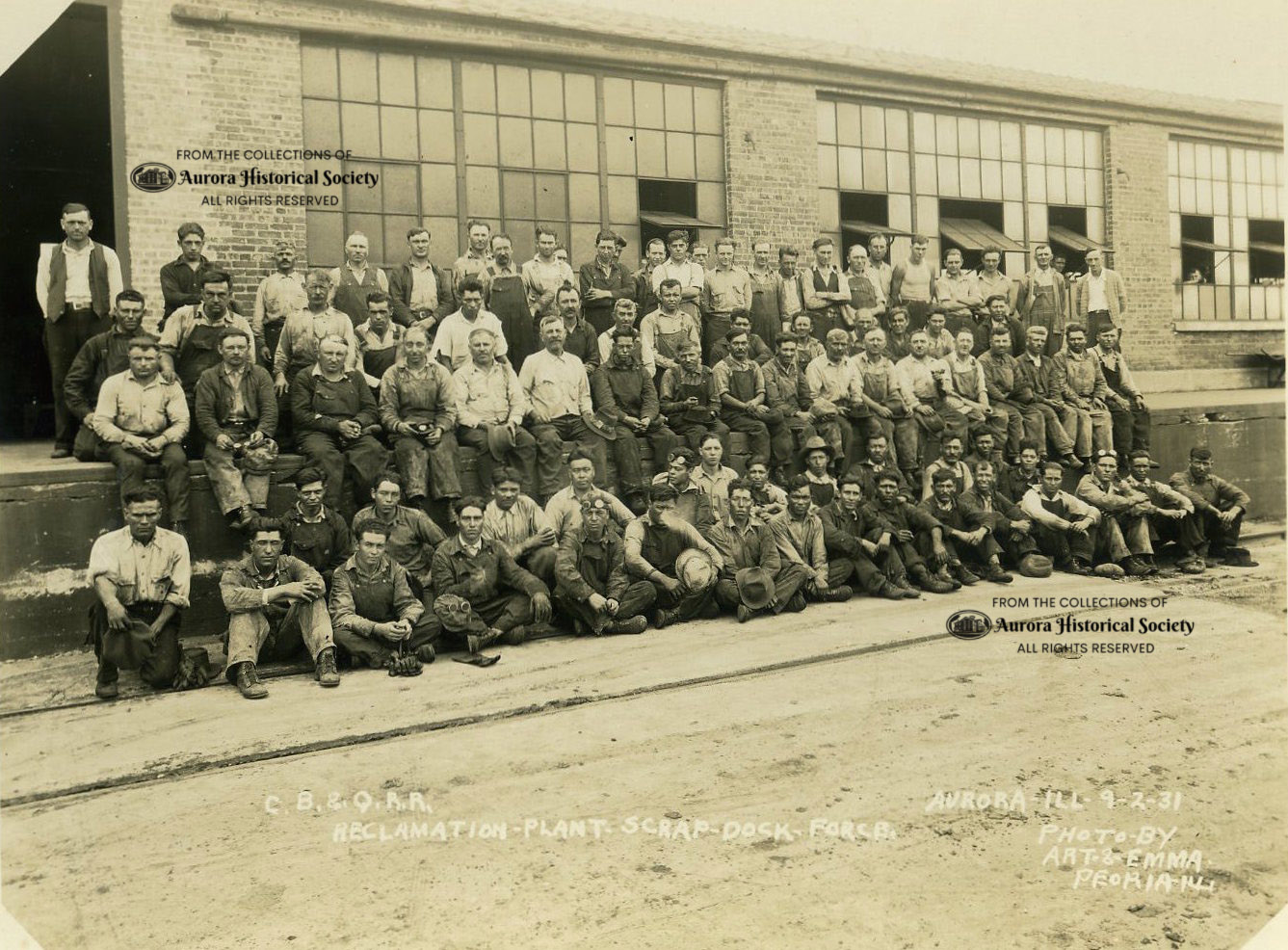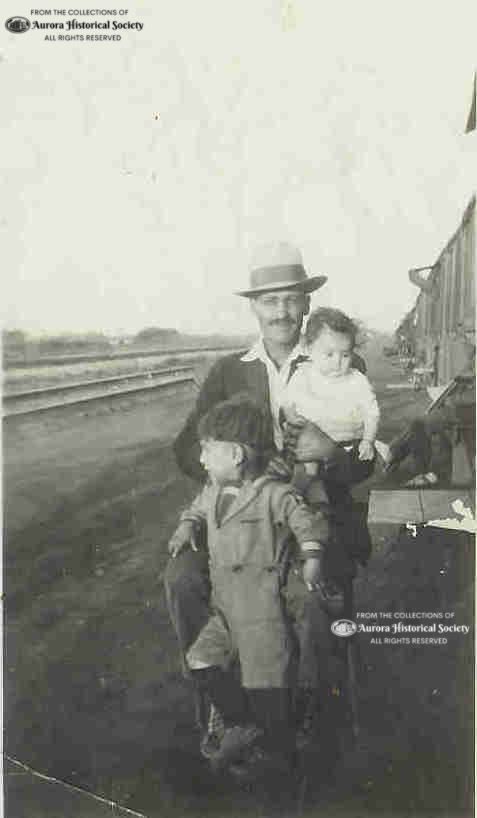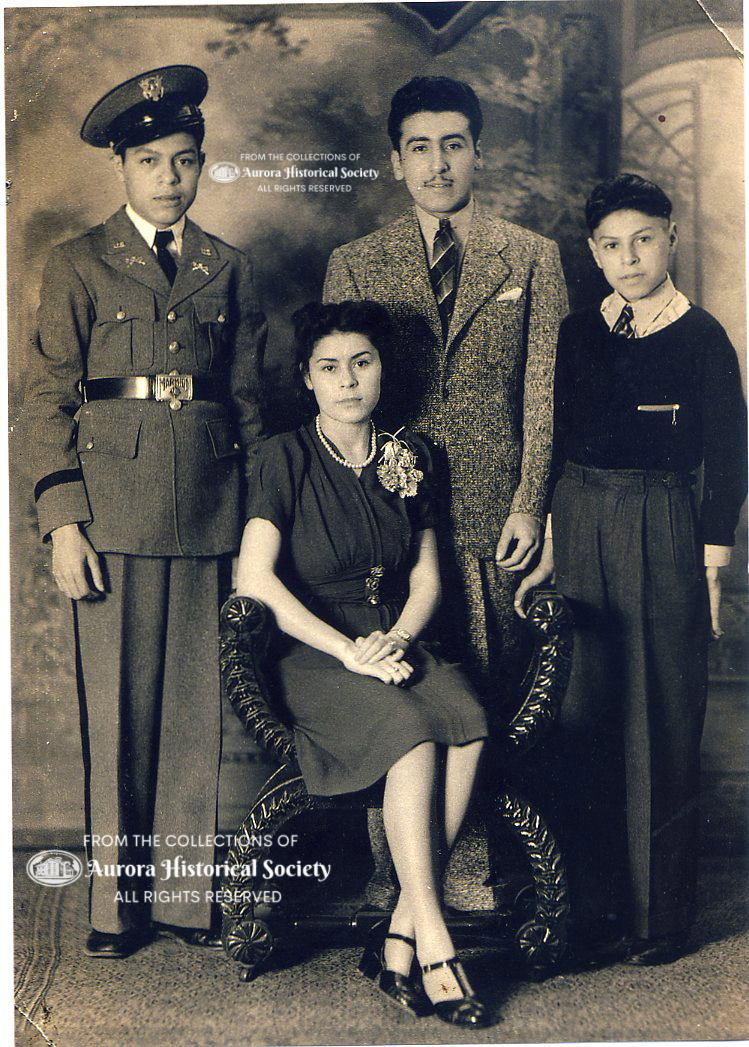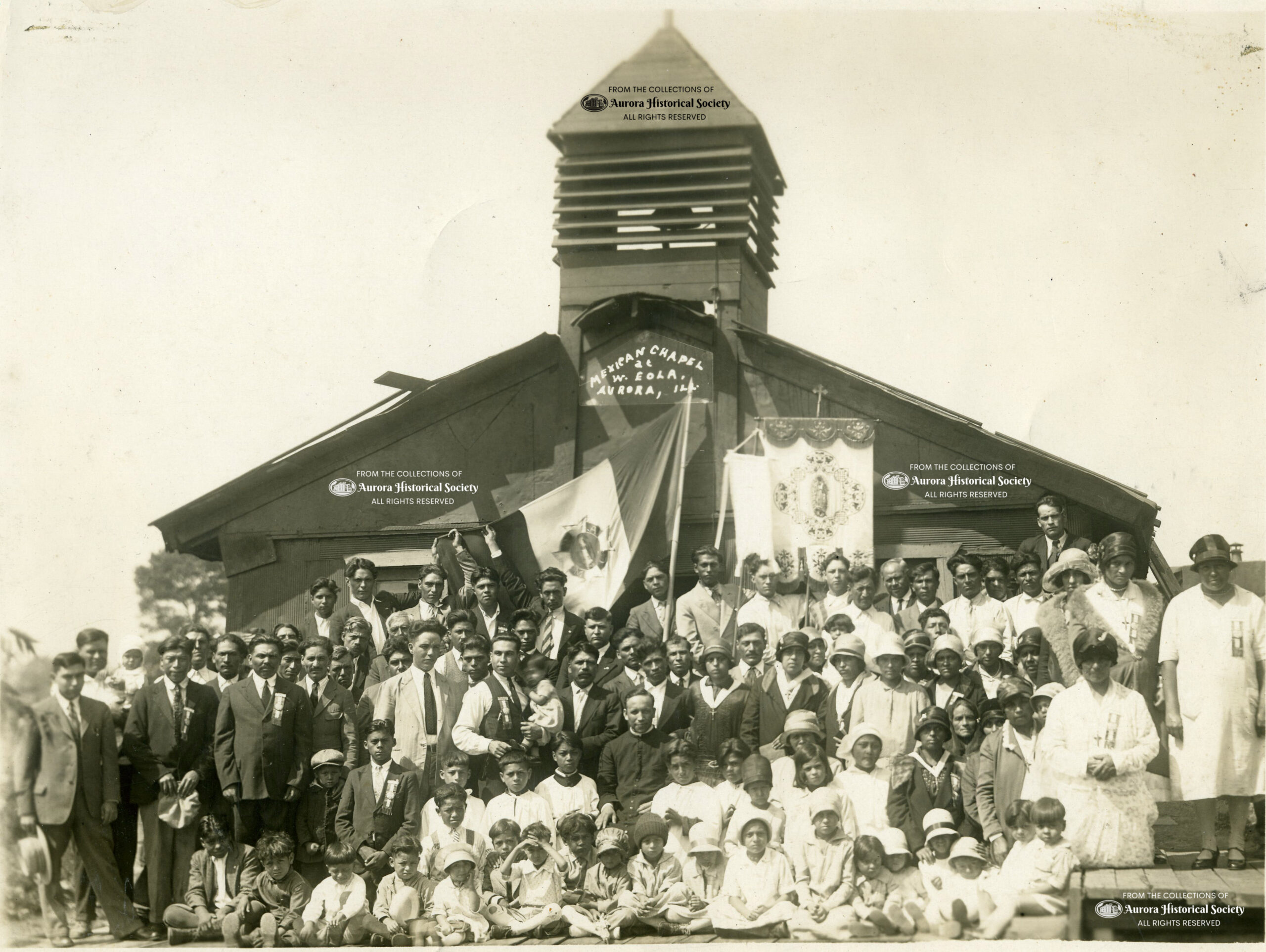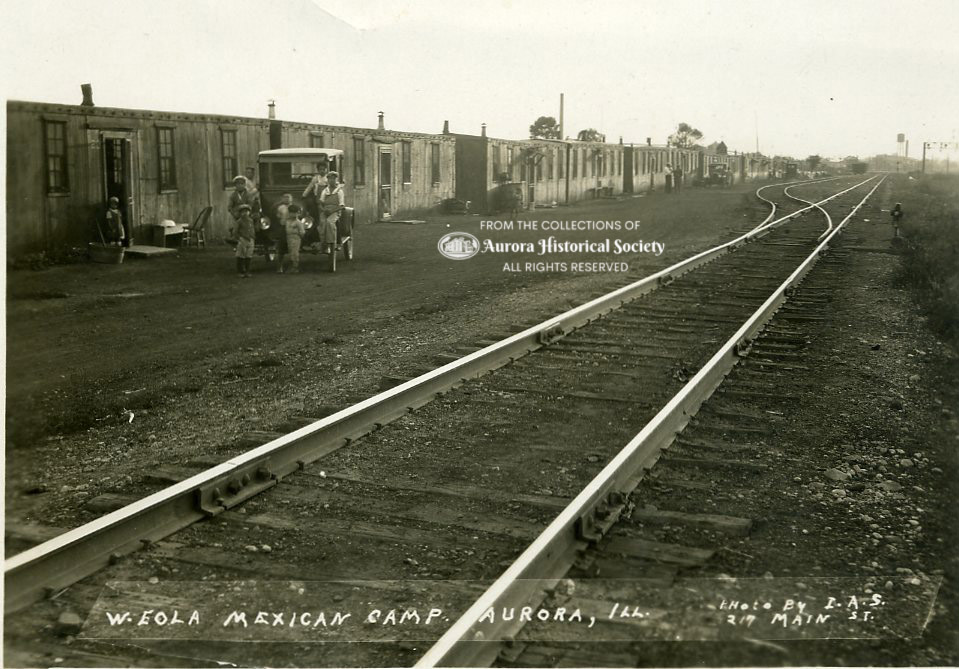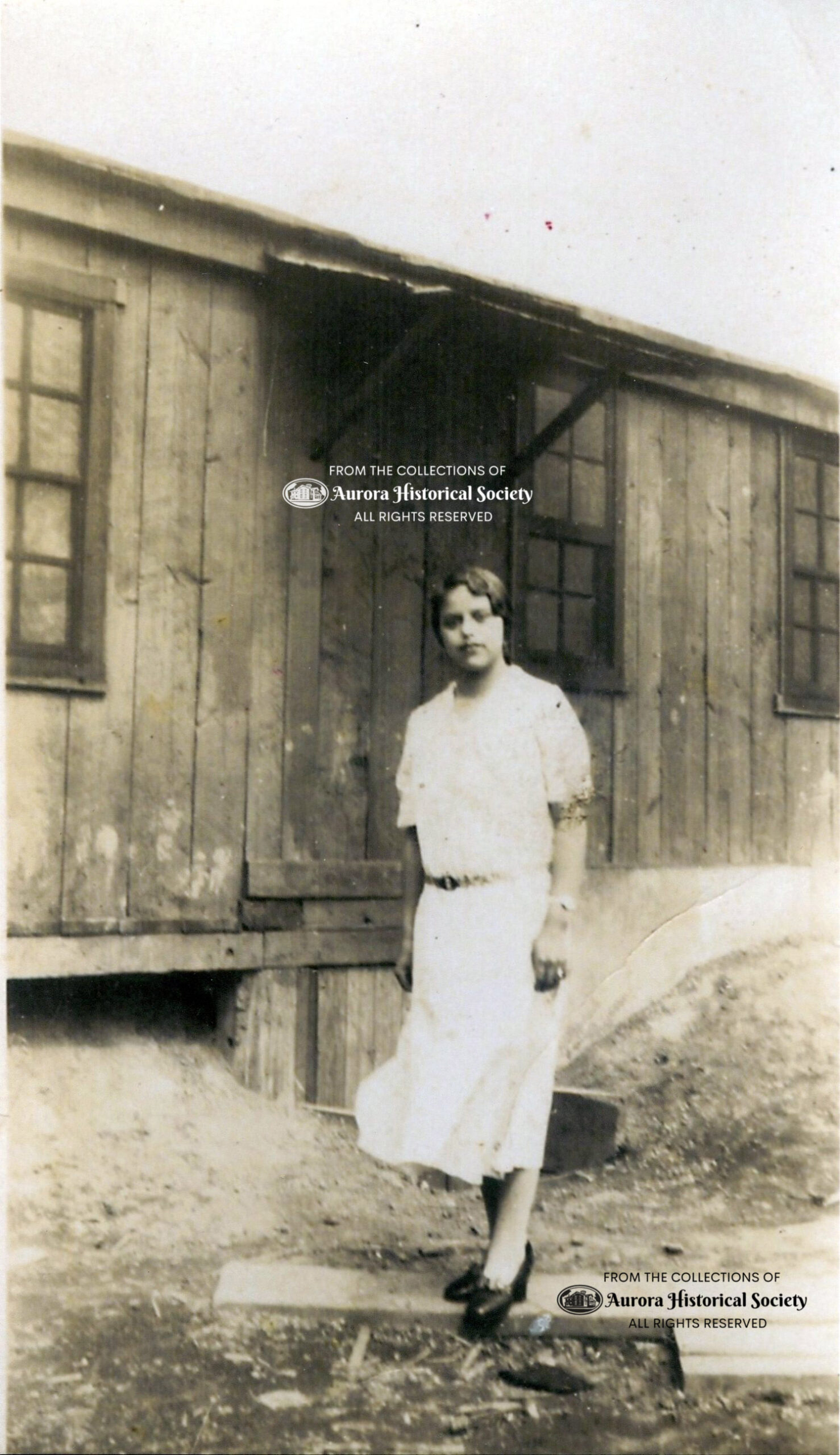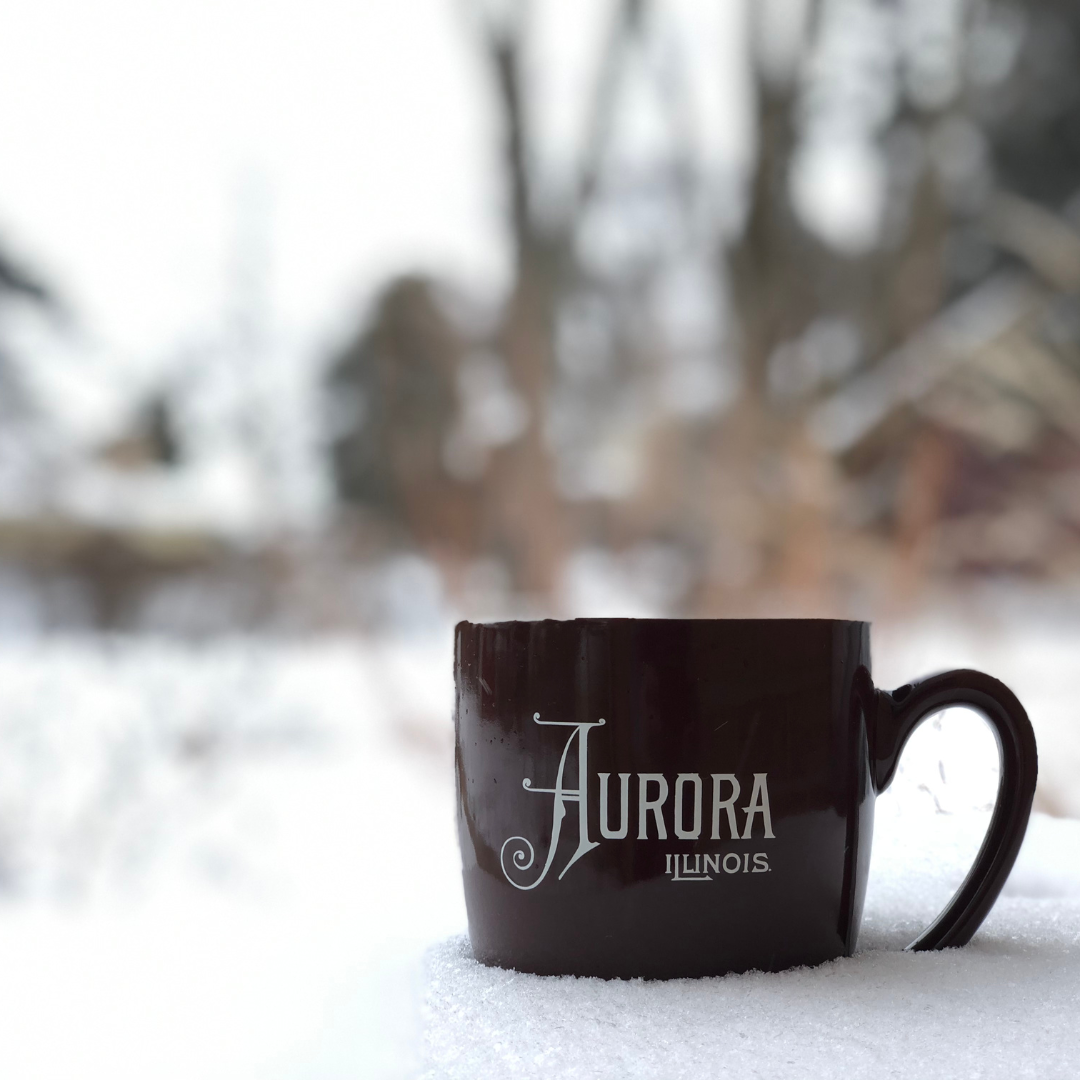The first Hispanic wave to arrive in Aurora was made up of Mexican immigrants, who first came north between 1910 and 1920, fleeing the Mexican Revolution. In the 1920s, U.S. restrictions on immigration from overseas spurred greater immigration from Mexico.

Workers at the Eola Reclamation Plant, 1931. The plant employed manyof Aurora’s early Mexican immigrants (Aurora Historical Society photo) 
Senobio Nila, who came to the US in 1923, and two of his children outside their boxcar. Nila came to Aurora in 192. Senobio lived to be nearly 107, passing away in 2008. (Nila family photo) 
Children of Agustin & Porfiria Nila (Jesse, Lupe, Joseph, Gene) pictured c. 1940. They grew up in Boxcar #3. Jesse, a Marmion graduate, was killed in action in WWII. Joe just passed away at the end of August at the age of 101. (Nila family photo)
Many of Aurora’s early Mexican immigrants worked for the Chicago, Burlington, & Quincy Railroad (CB & Q). Many of these were employed at the West Eola Reclamation Plant (Eola Scrap Yard). About 1923, the railroad agreed to provide housing near the plant in the form of old railroad boxcars which had been taken off their wheel carriages.
The Eola Boxcar Camp (known as “El Camp” to residents) became a thriving community of families in 20 cars. It even featured its own church, which the residents built themselves. With the Great Depression of the 1930s, the railroad work force was greatly reduced, and the boxcar camp was dismantled in 1934.

Eola’s Mexican boxcar community members around the church they built, pictured late 1920s (Aurora Historical Society photo) 
Eola Mexican Boxcar camp of the 1920s and early 1930s (Aurora Historical Society photo) 
Lupe Vargas outside a boxcar at the Eola Camp, 1930 (Photo courtesy of Leo Zarko)
During the Depression of the 1930s, many of Aurora’s Mexican community (and those throughout the U.S.) moved back to Mexico, or were forcibly “repatriated.” But some of the boxcar residents moved into town and got jobs in factories, notably Austin-Western. They built homes and lives here and organized their community around churches such as St. Joseph’s Catholic and St. Therese Catholic. Many of their descendants still live here.
Additional waves of Mexican immigrants came to Aurora after World War II, and have continued to arrive up to the present, contributing to the richness, diversity, and prosperity of our community.

